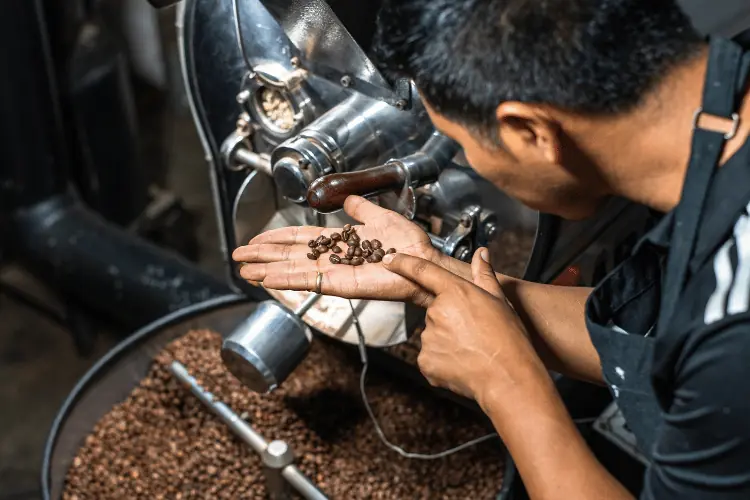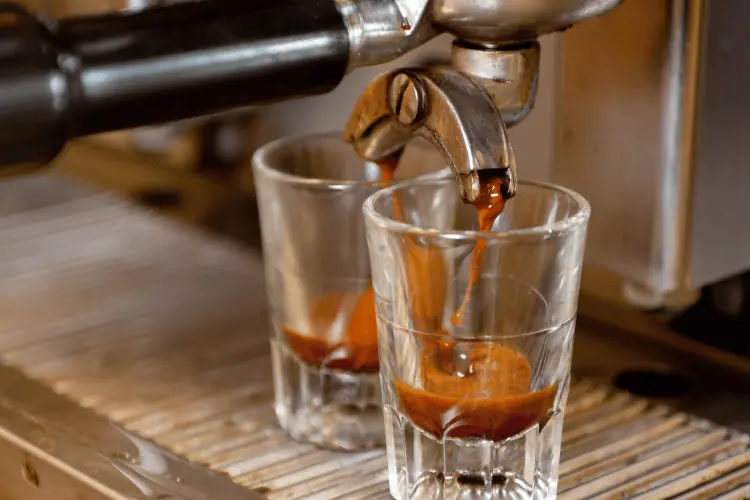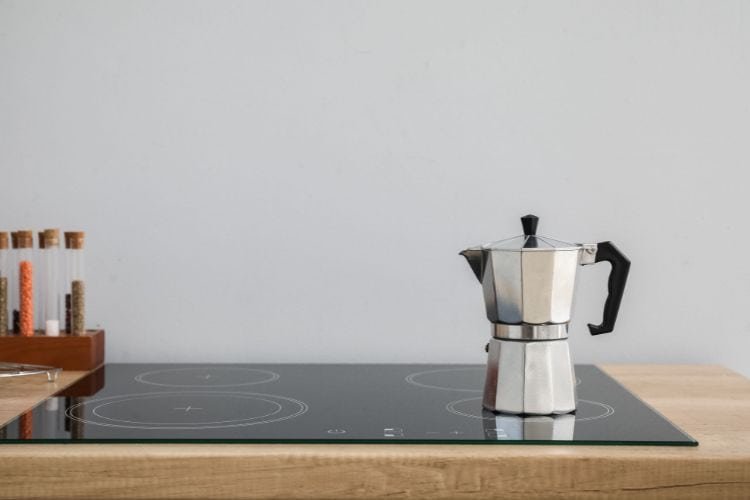We’ve all been there – you wake up, brew your morning coffee pot, and take that first sip. Wait, why does my coffee taste like soap? Such a not-so-pleasant surprise can leave you scratching your head.
But fear not because we’re here to decode the mystery of why your brew is channeling its inner dish soap. From neglected coffee gear to the water you use, there are a few suspects we need to investigate.
So, if you’ve ever wondered why your coffee has a soapy taste, grab a seat. In this article, we’ll unravel such a curious case together.
Common Reasons Why Coffee Tastes Like Soap
If you notice a soapy taste in your coffee, you may think it’s only because of soap residual. Yet, besides that, there are actually a few other reasons. Check them out.
1. Poorly Cleaned Equipment
When it comes to your coffee gear, cleanliness is key. Basically, cleaning agents from previous washes can sneak into your brew. As a result, they create an unintended blend of flavors.
Additionally, coffee oils build up on your gear and coffee pots. If not regularly cleaned, such remnants can turn rancid and impact the flavor of your brew.
Tips for Optimal Fix:
- Give your coffee equipment a thorough rinse with warm water after each use. That’s especially applicable for items like mugs, coffee pots, carafes, and filters.
- Consider using a mild dish soap to clean your equipment if rinsing isn’t sufficient. Moreover, a dedicated scrub can eliminate any lingering soapy taste.
- Dismantle equipment with removable parts, such as espresso machine filters or French press components, for a more thorough cleaning. Pay attention to any nooks and crannies where coffee residues may accumulate.
- Perform a deep cleaning of your coffee pot, coffee maker, or other equipment regularly.
- If you use a coffee grinder, clean it now and then to prevent the accumulation of old coffee grounds and oils.
- If you own a coffee maker, use white vinegar to descale it and remove mineral deposits that can affect the taste.
- For coffee makers with water reservoirs, regularly check and clean them. Stagnant water can develop odors or impurities that impact the taste of your coffee.
- After cleaning, ensure all components are thoroughly dried before reassembling or storing them. By nature, dampness can lead to the growth of mold or mildew, affecting the taste of your coffee.
2. Water Quality
The water you use plays a significant role in your coffee’s taste. For example, calcium and magnesium in water can influence the flavor profile. Moreover, the presence of chlorine or other additives can contribute to a soapy taste.
Thus, understanding the types of minerals and the concept of water hardness is vital.
Tips for Optimal Fix:
- Invest in a water filter to remove impurities and improve your coffee’s taste. This is particularly crucial if your tap water has a noticeable taste or odor.
- Check the hardness of your water using water hardness test strips. Overall, understanding the mineral content helps you make informed adjustments. As a result, you become able to achieve the optimal balance for brewing.
- Avoid distilled water as it may lack minerals essential for flavor extraction. This might lead to a flat or dull taste in your coffee. Alternatively, opt for filtered or spring water.
- If your water lacks certain minerals, consider adding them in controlled amounts. It helps to consult with coffee experts or use additives designed to enhance coffee flavor.
- If you enjoy cold brew, use cold, filtered water from the start. Cold water extracts flavors in a different way than hot water, contributing to the unique characteristics of cold brew coffee.
- If your coffee maker uses water filters, adhere to the recommended replacement schedule. Used filters can become less effective in removing impurities.
- Pay attention to the water temperature during brewing. Water that’s too hot can lead to over-extraction, leading to a bitter taste. On the other hand, water that’s too cold may result in under-extraction.
3. Coffee Bean Quality
Primarily, your choice of coffee beans affects the taste of your brew significantly. In other words, the freshness of the beans is paramount. That’s because stale beans can introduce unwanted flavors like soapy taste.
That’s why you should learn the key steps in preserving the authentic taste of your coffee. This ranges from recognizing the signs of staleness to choosing beans with the right roast level.
What’s more, proper storage is essential to prevent cross-contamination. This way, you ensure coffee beans maintain their intended flavors.
Tips for Optimal Fix:
- Opt for recently roasted beans by looking at the roast date to ensure peak freshness and flavor.
- Experiment with coffee beans from various origins. Each region offers distinct flavor profiles, allowing you to discover the taste variations that align with your preferences.
- Select beans based on your preferred roast level. While light roasts preserve the bean’s natural characteristics, dark roasts develop smokier flavors. All in all, you need to find the roast that suits your taste preferences.
- Familiarize yourself with different bean varieties, such as Arabica and Robusta. Each varietal contributes unique flavors. As such, understanding these differences empowers you to make informed choices.
- Buy coffee beans in smaller quantities. Doing so ensures you enjoy fresh coffee every time without the risk of beans becoming stale.
- Whenever possible, choose whole beans over pre-ground. Ideally, grinding coffee beans just before brewing preserves the aromatic oils and flavors.
- Transfer your beans to an airtight container once opened. This prevents exposure to air, which can lead to oxidation and a loss of flavors.
- Store coffee beans away from strong-smelling items, as they can absorb odors. Coffee is porous and can take on flavors from its surroundings.
4. Under-Extraction
Under-extraction occurs when the coffee brewing process fails to extract the full range of flavors. This can be due to insufficient extraction time or an improper grind size.
That’s why knowing the signs of under-extraction is essential for achieving a balanced and flavorful cup. On top of that, adjusting brew time and grind size is crucial to avoid under-extraction issues.
Tips for Optimal Fix:
- Familiarize yourself with the concept of extraction time, as it can influence the flavor profile of your coffee. This refers to the duration your coffee grounds are in contact with water during brewing.
- Learn to identify the taste signals indicating under-extraction. Common signs include a sour or astringent taste. Adjusting your brewing time can rectify this issue and lead to a more balanced cup of coffee.
- Experiment with different grind sizes for your coffee beans. Finer grinds expose more surface area to water. This results in a quicker extraction and bolder flavors. Alternatively, coarser grinds offer a milder taste.
- Understand that different brewing methods need different extraction times. For example, espresso has a shorter extraction time than a French press coffee.
- Let your taste buds be your guide. The optimal grind size and brewing time depend on your taste preferences. Experiment with various combinations until you find the balance that suits you.
- Refer to brewing guidelines provided by coffee roasters or brewing equipment manufacturers. Such guidelines offer recommendations for grind size and brewing times for their products.
5. Coffee Bean Roasting
The roasting process can influence the flavor profile of your coffee. For instance, under-roasted beans don’t reach their full flavor potential. As such, they can introduce undesirable tastes.
That’s why it’s essential to learn the role of roasting and recognizing the signs of under-roasted beans. Doing so enables you to make informed choices when selecting your coffee.
Tips for Optimal Fix:
- Learn about the signs of under-roasted beans and how they influence the flavor of coffee.
- Be aware of the taste indicators that suggest under-roasting. This may include grassy or raw flavors, lacking the complexity developed during roasting.
- Inspect the color of your coffee beans. Under-roasted beans often appear pale or uneven compared to their fully-roasted counterparts.
- Ensure consistency in the roast level of your beans. If you notice variations in color among beans in the same batch, it could be a sign of uneven roasting.
- Learn about different roast categories, including light, medium, and dark roasts. Each category offers distinct flavor profiles.
- Source your beans from reputable roasters known for their commitment to quality. Established roasters have a meticulous approach to roasting, minimizing the chances of under-roasting.
- Feel the surface texture of the beans. Under-roasted beans may have a rough texture, lacking the smoothness of well-roasted coffee.
Conclusion
By now, you should have a comprehensive answer to your question: “Why does my coffee taste like soap?”
Optimally, the key is keeping your gear clean, using good water, choosing fresh beans, and perfecting the brewing process. Armed with these tips, you may savor your coffee, knowing each sip is a step toward a better morning brew.
So, as you perform your daily brewing ritual, remember that each step contributes to the symphony of flavors in your cup. Embrace the delightful alchemy of coffee-making, and may your mornings be full of the aromatic joy of a perfectly brewed cup of coffee.











